

-
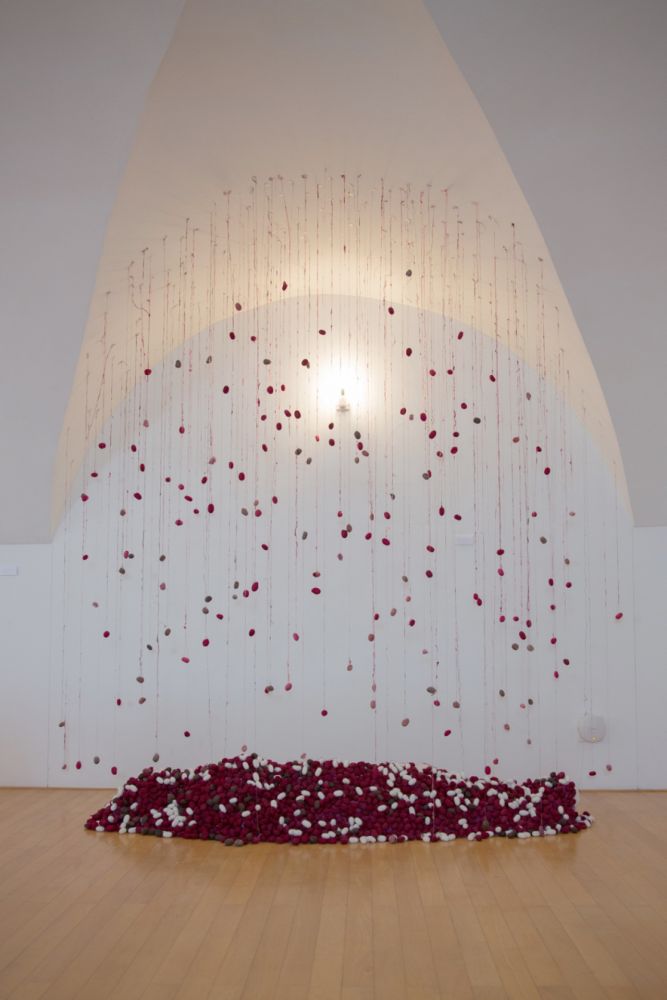
Two Lives, Many Lives, 2018, Yoshiko I. Wada
Installation:
Silk waste cocoons dyed with cochineal, hand manipulated, suspended and piled
-
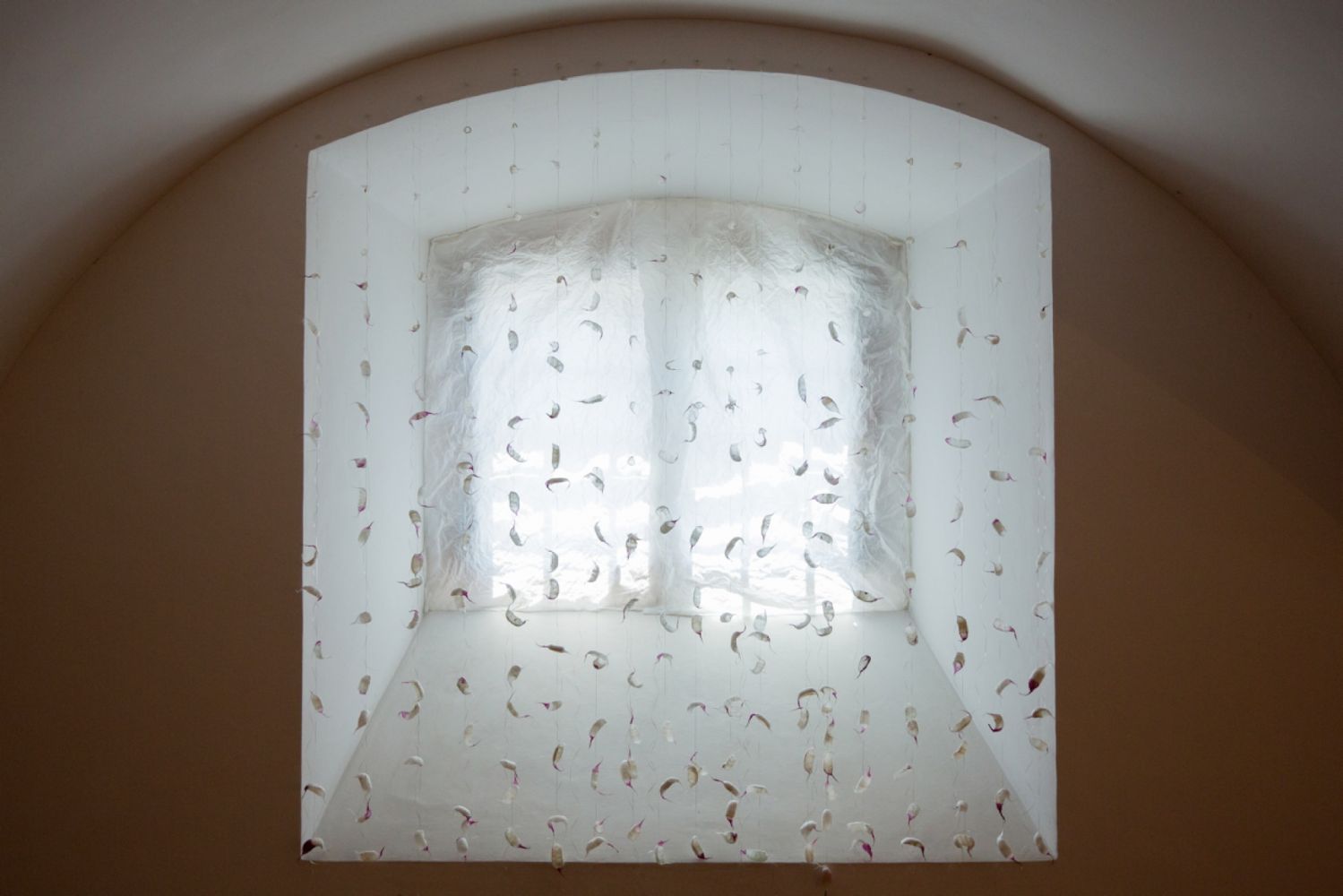
Two Lives, Many Lives, 2018, Yoshiko I. Wada
Installation:
Silk carrier rods are hand manupilated and formed and stained with cochineal ink. They are stringed with monofilament and suspended in front of a milky transparent window -

Beni = Gold, Yoshiko I. Wada, 2018
Installation:
silk waste cocoons hand manupliated, gold leafed
This first installation from the Beni=Gold series challenges our notion of value. Paper money is the most
familiar form of currency for modern people. In the past, Japanese red dye or beni was once so precious
that by its weight it was as expensive as gold. Along the silk road, bolts of silk cloth were traded as a form
of currency as they were versatile, compact, and sustainable.
-
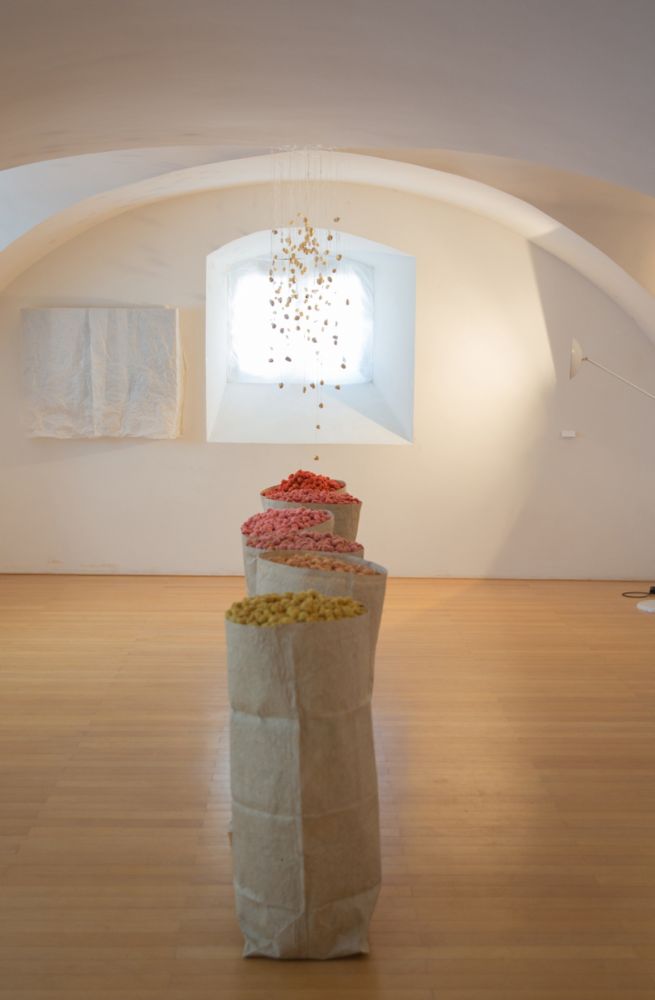
Beni = Gold, Yoshiko I. Wada, 2018
-
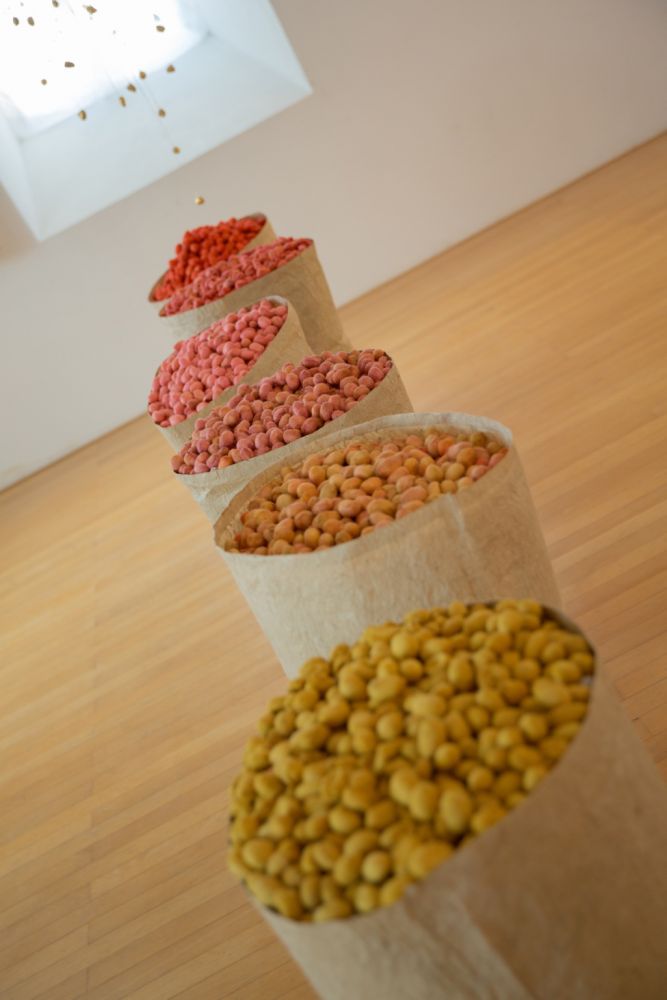
Beni = Gold, Yoshiko I. Wada, 2018
-
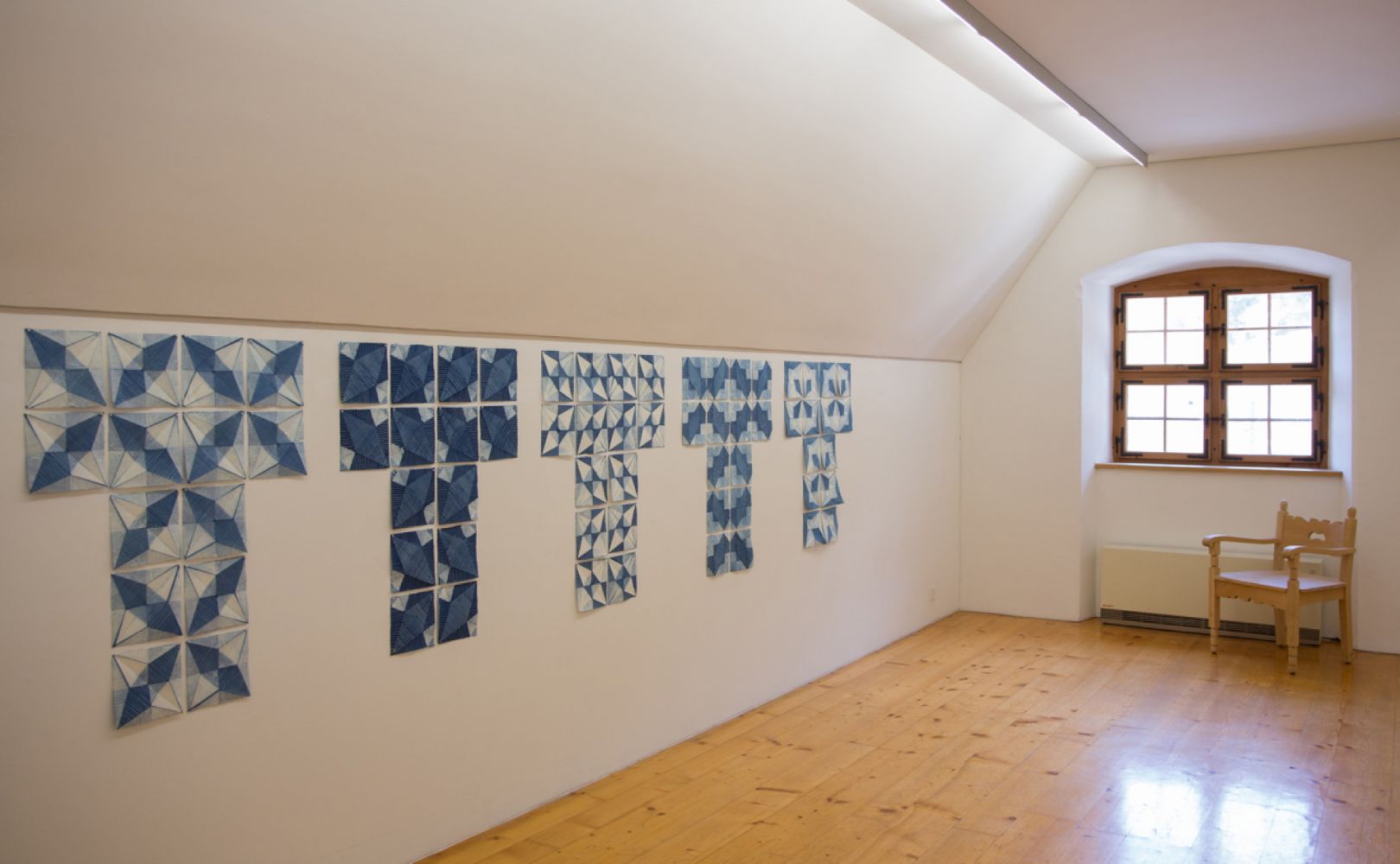
Origami Folds, Patterning Paper Yukata, Ana Lisa Hedstrom, 2017
Installation: Indigo on paper, folded and wrapped
each composition 100 x 76 cmFolds have been an intrinsic part of my shibori dyeing, so it was inevitable that I would investigate origami folding. The preliminary folds for creating most origami figures are called the diamond, bird, frog, and fish. By dyeing the surface of these simple folds a variety of geometric patterns are revealed.
In Japan there is a long tradition of wearing indigo dyed cotton kimono called Yukata. They are donned after the bath or on hot humid summer nights especially for festivals.
The Yukata kimono shape is the perfect way to display the compositions of the paper squares which are pinned to a wall. I love how a larger graphic image is created with the various arrangements.
-
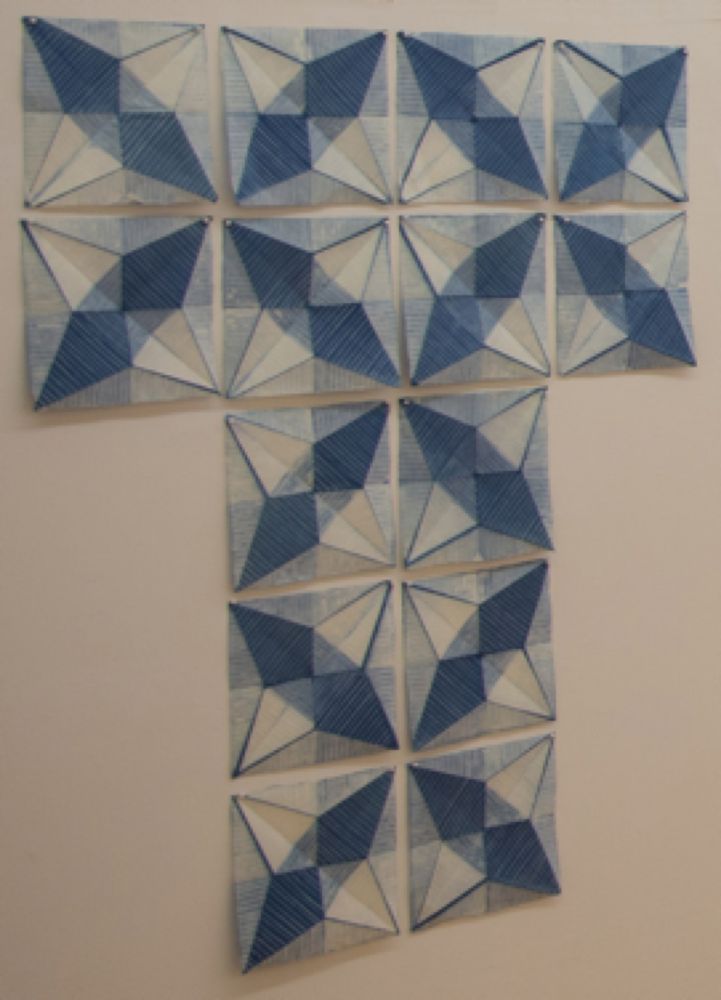
Origami Folds, Patterning Paper Yukata, Ana Lisa Hedstrom, 2017
-
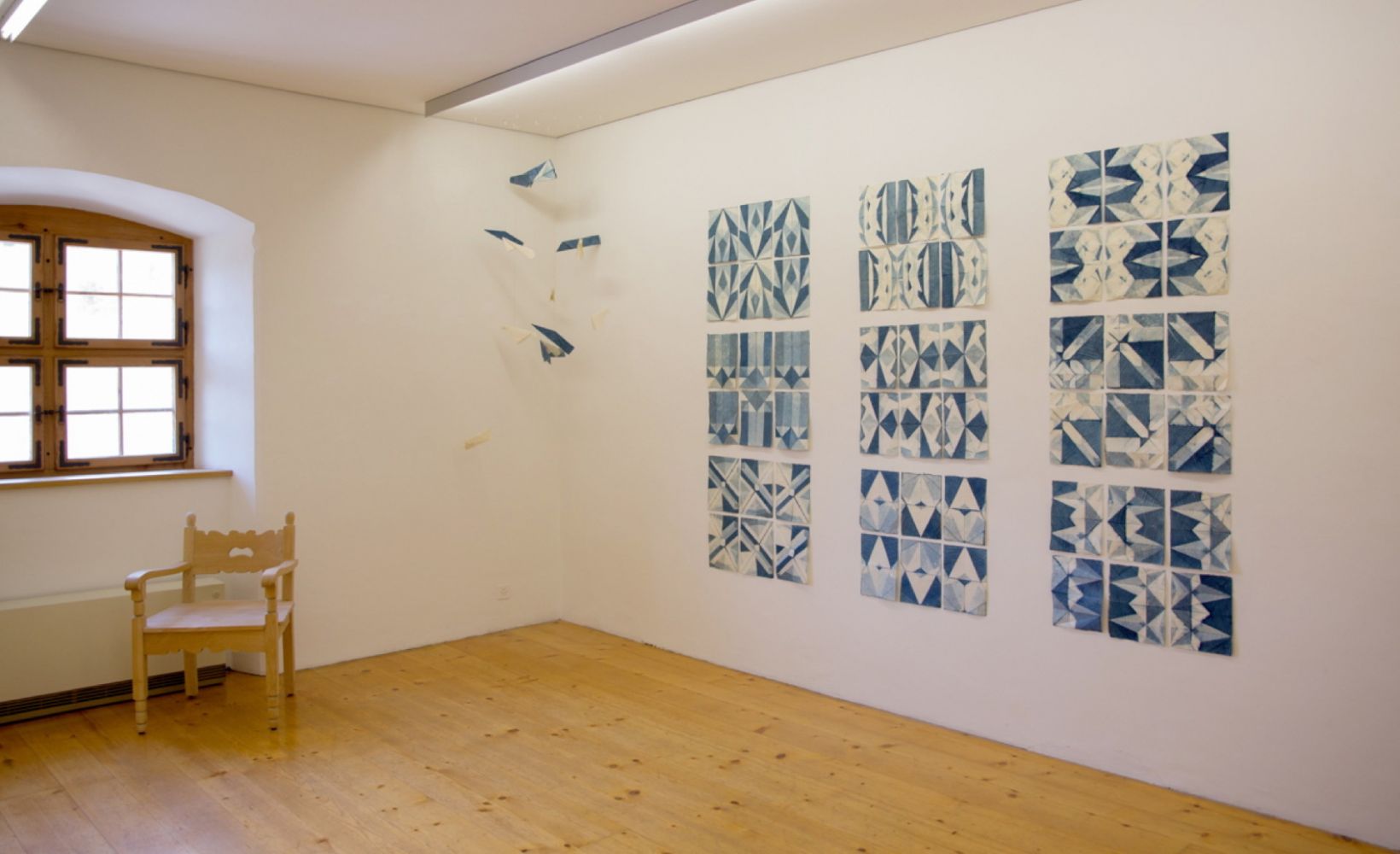
Folded & Flat, Revealing the Geometry of Paper Airplanes, Ana Lisa Hedstrom, 2017
Installation: Indigo on paper, folded and wrapped
each column of three compositions : 200 x 68 cm
Who doesn’t love paper airplanes? I fold my paper in a variety of paper airplanes, dye it in indigo on both sides, and when unfolded a geometric pattern appears. I love composing the sheets into compo-sitions which are reminiscent of quilts. Quilts, just like paper airplanes are usually made of throw away material or paper.
This complete installation includes a shaft of suspended folded paper planes and three columns of paper compositions.
-
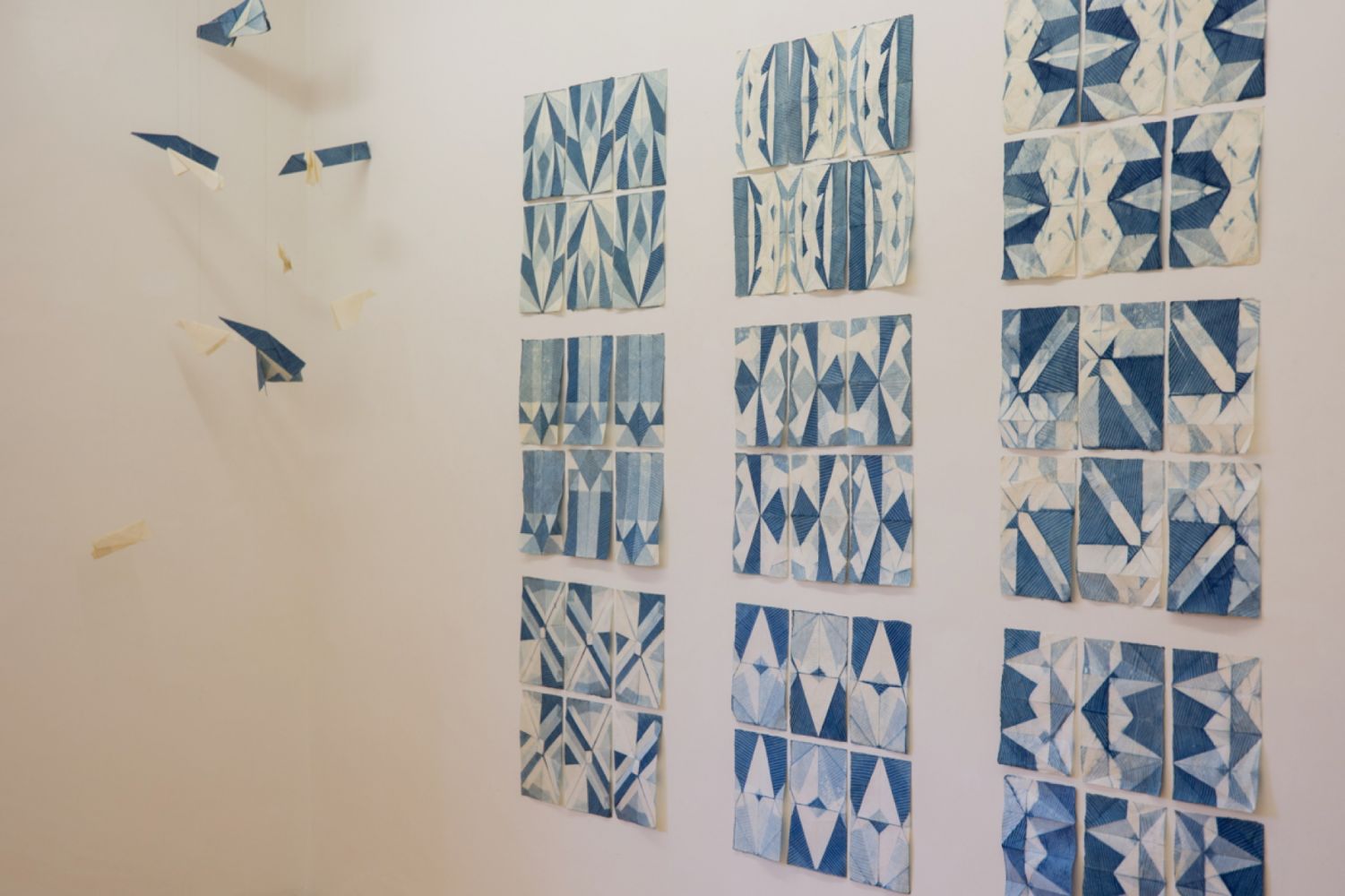
Folded & Flat, Revealing the Geometry of Paper Airplanes, Ana Lisa Hedstrom, 2017
-
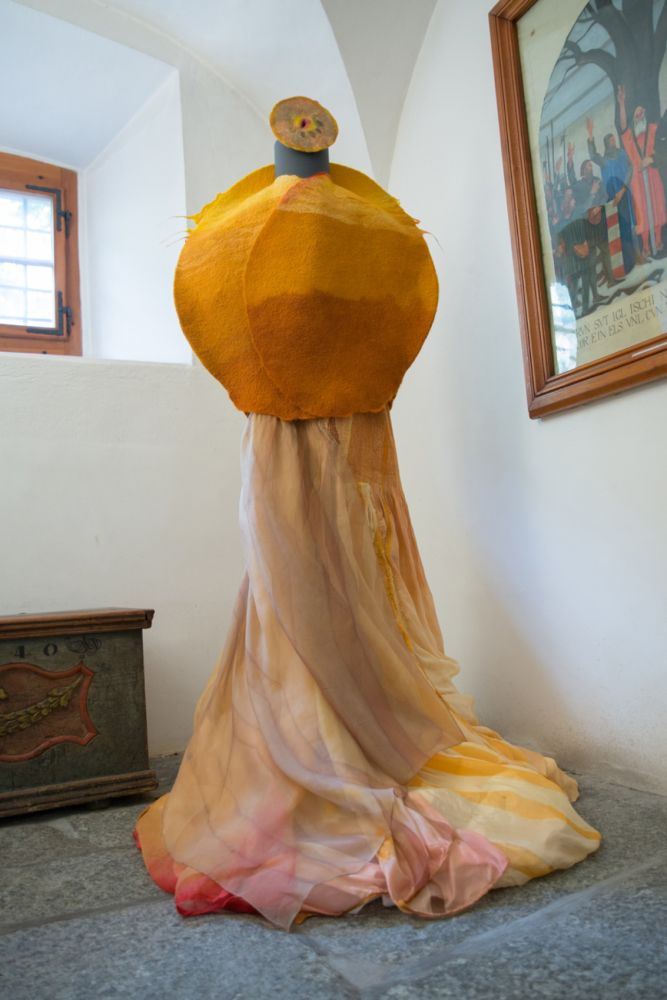
Sunset Over Uji River, Jorie Johnson, 2014
Ensemble: Cape with strapless evening gown, felted
The concept image is taken from the intense amber glow of the setting sun on the flowing Uji River behind my studio in southern Kyoto.
The traditional Turkish shepherd’s Kepenek felt cloak is dramatized in the hopes it will appear on a “Contemporary Nomad” on the Hollywood Red Carpet (which I do believe the origin of historically was red felt from Asia).
-
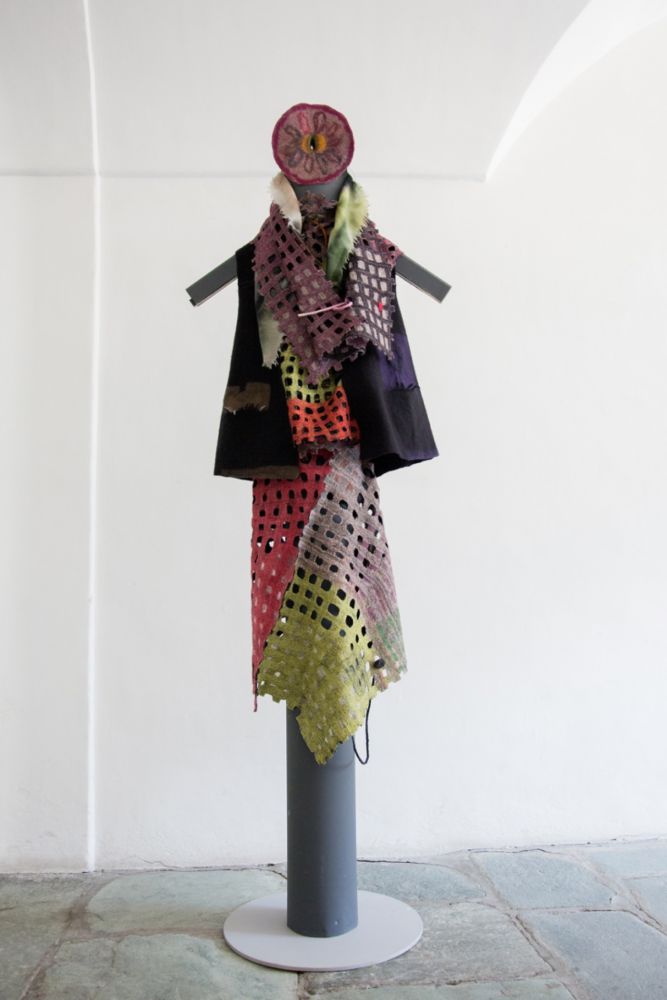
Nest Ensemble, art-object "Slice Series: apple, Jorie Johnson, 2013-18
Merino/silk, inkjet printed wool, rayon ribbon
Migratory birds interlock fiber and twig for their nest construction, like nomads construct their yurts. For the Contemporary (No)Mad traveler who is working by day and needs options in her wardrobe (such as a reversible garment) providing bright by day, and elegant by night. Seamlessly constructed using a fine wool/silk blend from a Swiss producer.
-
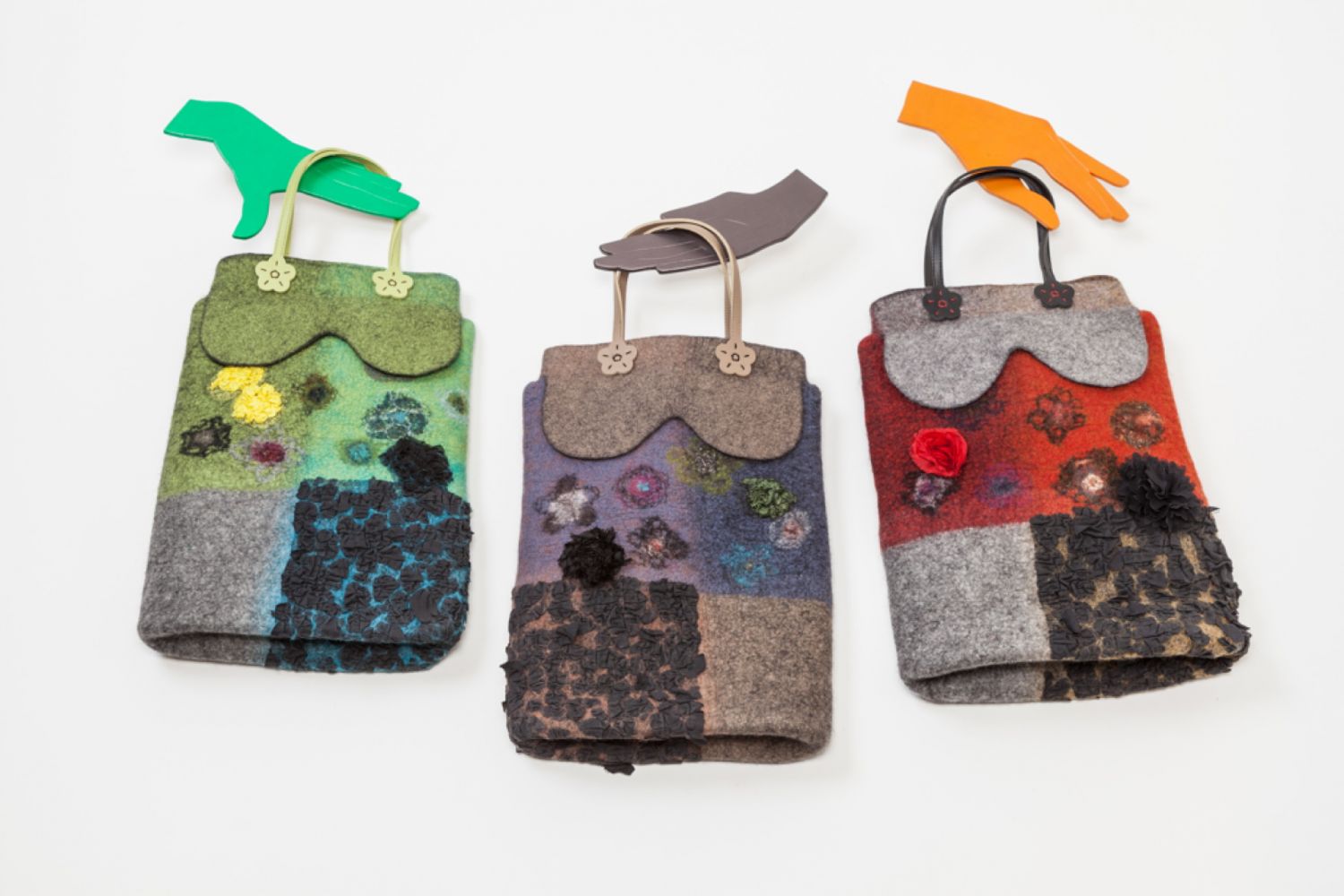
WILD Flower Totes, Jorie Johnson, 2018 - Photo: Sergio Leymarie
Merino and crossbred wool, yarns, polyester flowers, cotton/polyester mesh fabric, faux leather handles
The departure ticket for any series of work is interesting, just ask the artist! Here, the long ago purchased tote bag handles begged to be put to good folly and be sent along to Switzerland.
Felt-making offers surface design play with a cross selection of materials, showing the absorption capability of the shrinking wool matrix in action, by the time the bag fabric is completed.
-
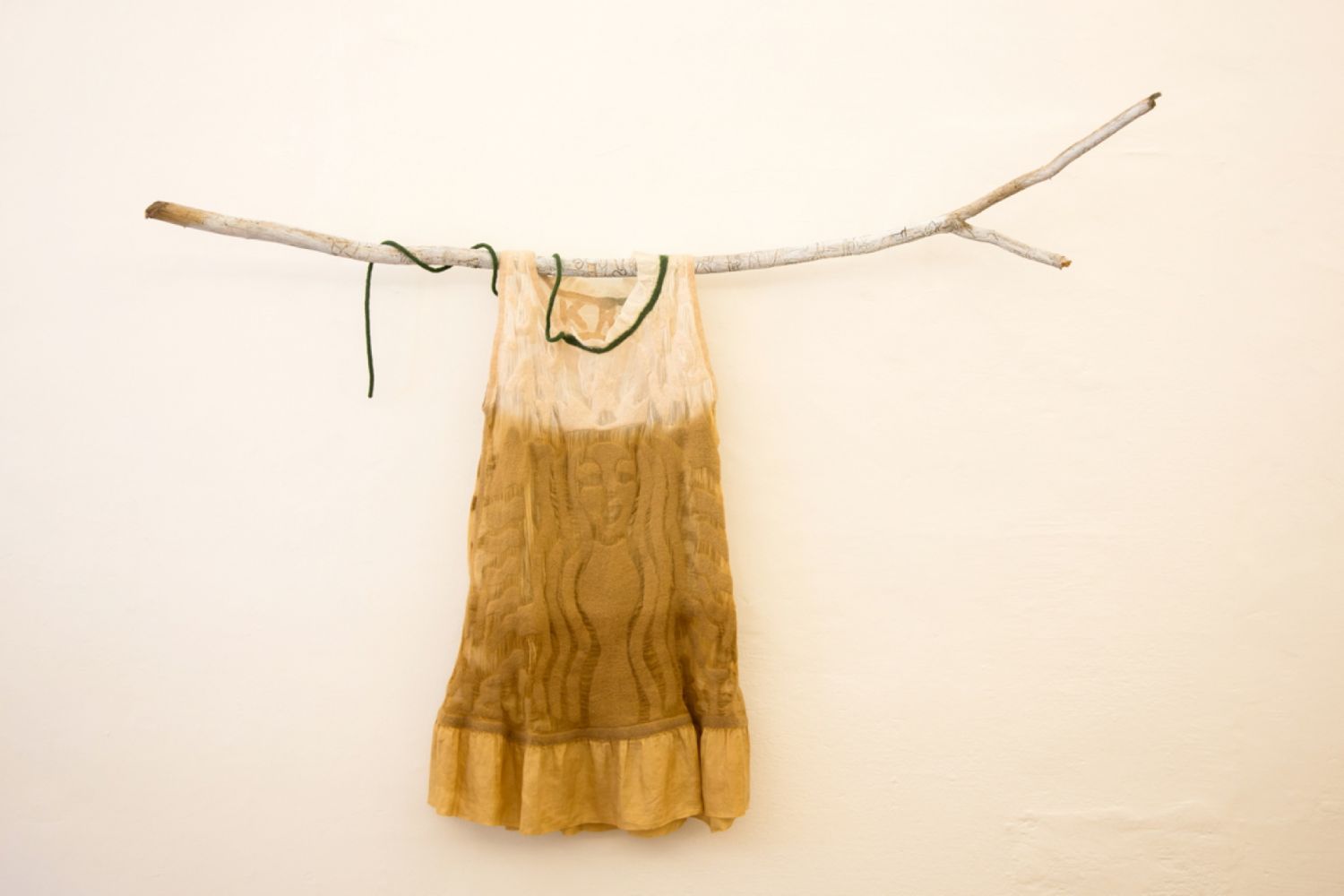
Starbucks’ Barista Smock (with Starbucks’ cup & straw - not on photo), Jorie Johnson, 2013
Merino wool, Silk fabrics, Plastic Starbucks’ cup with straw
At the time of manufacture there were twenty Starbucks in Kyoto and and as many in Denver, Colorado. What social image would be recognizable if lost but then dug up after 100 years?
-
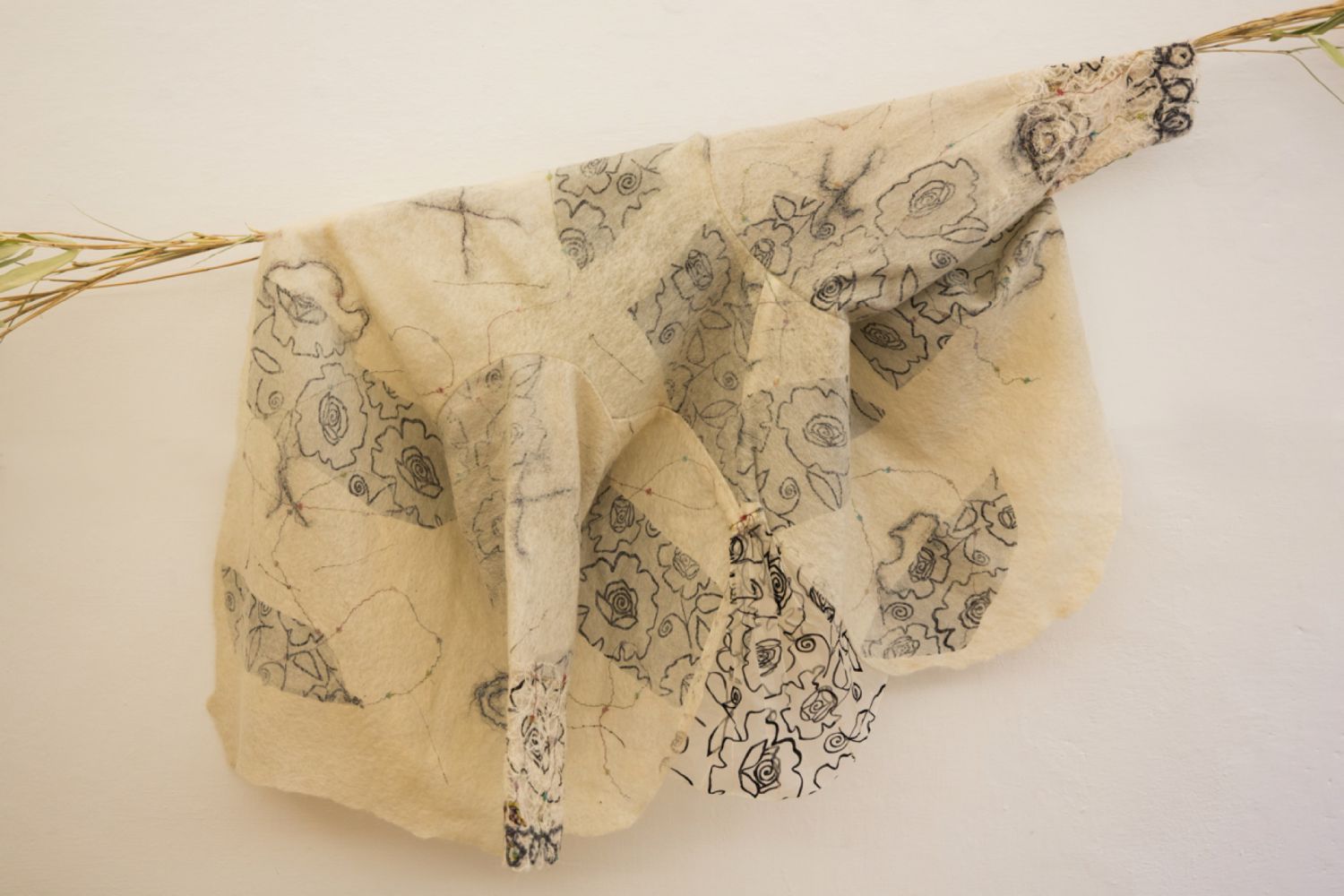
Confetti Jacket, Jorie Johnson, 1998
Swiss Walliser wool, rayon flocking on silk organza, novelty yarns, peacock feathers, felting
Like the lightly falling confetti at a wedding, using this very special Swiss Walliser wool allows for a fine, airy lace felt, to which, no other wool in the world can compare. My passion is textile design and I am using Sumi ink on silk for its’ unique capabilities as a natural pigment that compliments the silk and wool.
-
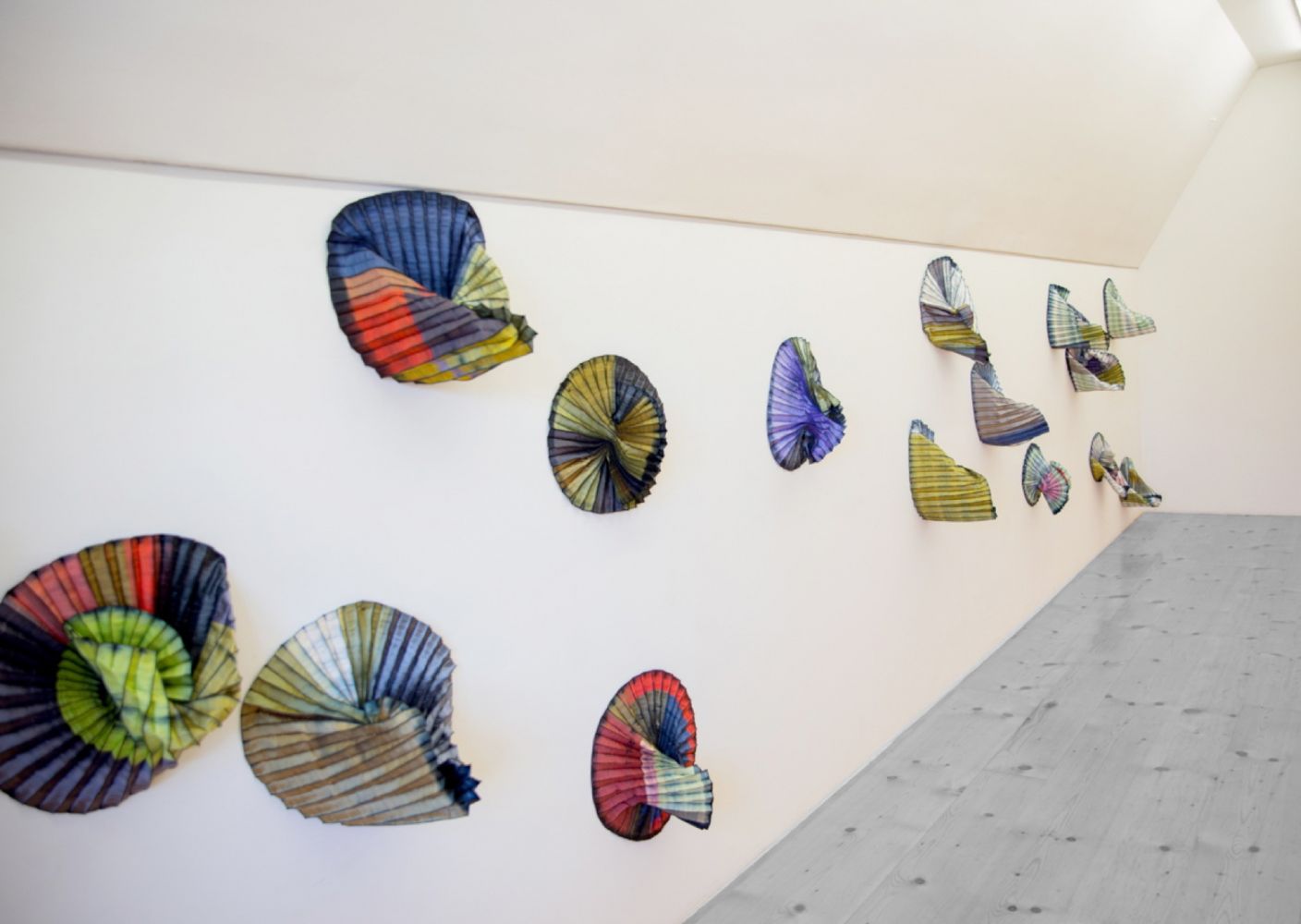
Unfolding Project: Accordion BonBons, Marie Jaeger, 2018
Installation of Neck Wraps and Ponchos, silk, pieced, pleated, dyed, stitched
These multi-dimensional silk wearables are created by reconfiguring post-production textile remnants. The Accordion BonBon neck wraps and ponchos are reversible, circular pleated columns that transform into soft sculptural collars when draped on a body.
-
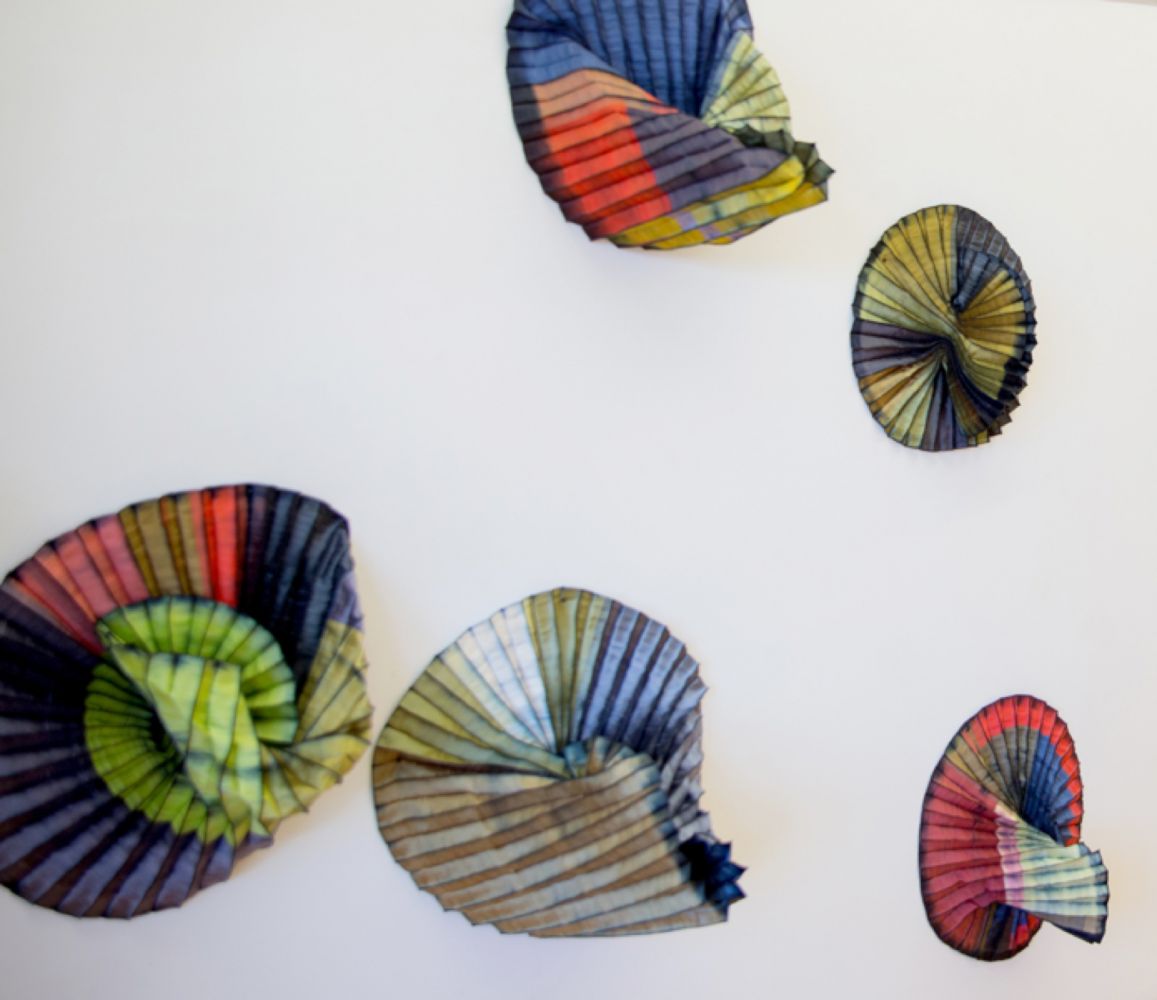
Unfolding Project: Accordion BonBons, Marie Jaeger, 2018
-
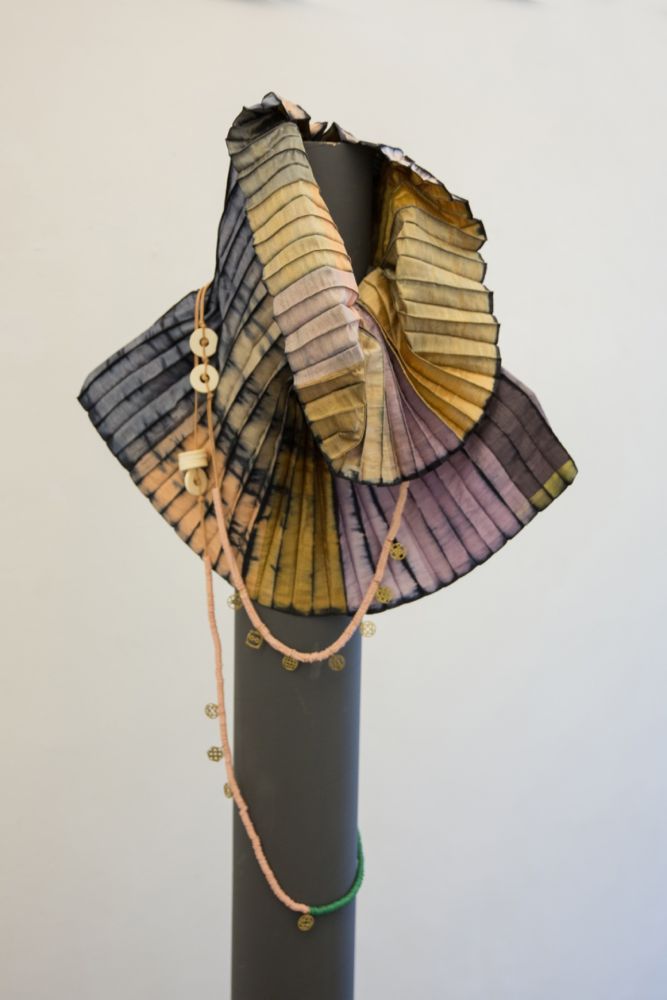
Unfolding Project: Accordion BonBon, Marie Jaeger, 2018
-
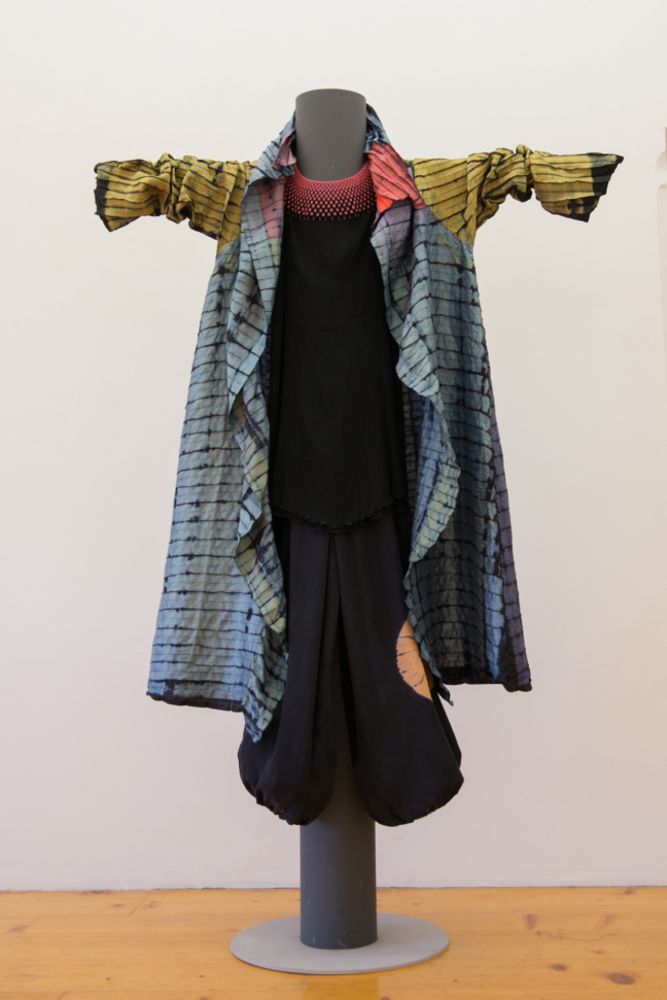
Accordion Pleated Duster (ensemble): Blue+Coral+Charcoal, Marie Jaeger, 2016
Silk, pieced, stiched, dyed, pleated
Five-colored pleated duster with black tunic, Shibori circle pant, velvet belt, beaded necklace
The Accordion Dresses, Jackets and Dusters are voluminous, oversized silhouettes that are constructed, then pleated, dyed and edge-stitched, giving the garments wide shapes and forms that are unexpectedly diaphanous and lightweight.
-

Accordion Trapezoid Dresses, Marie Jaeger, 2018
Pieced, pleated, dyed, stitched
-

Accordion Pleated Duster (ensemble, back-side): Blue+Coral+Charcoal, Marie Jaeger, 2016
-
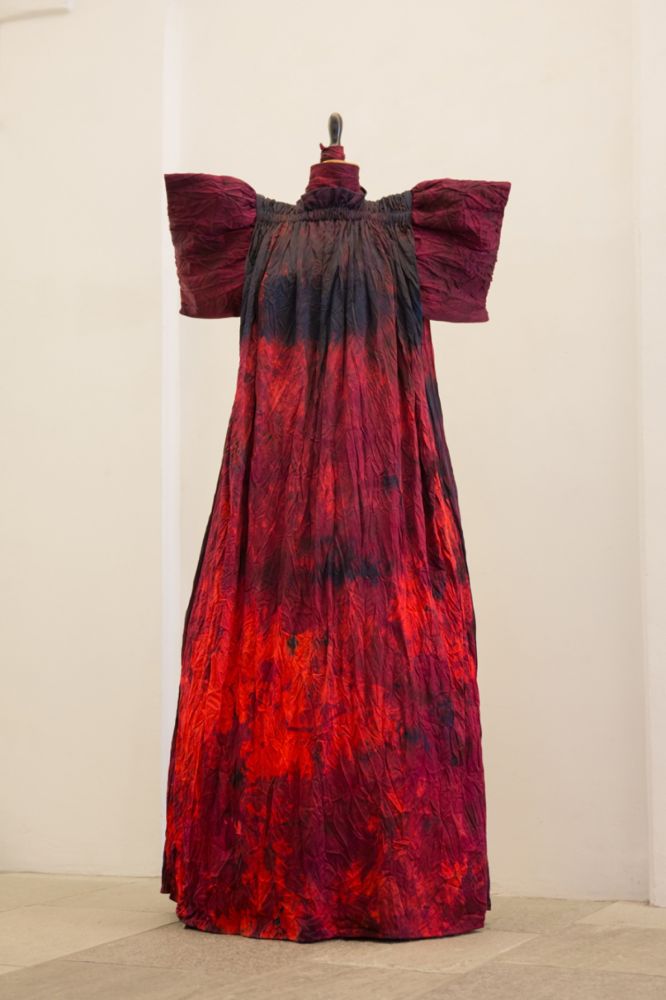
Lady Liberty, Mascha Mioni, 2013
silk, painted, crinkled
Human quest for liberty leads everywhere to revolution, war and destruction.
War and destruction are symbolized by the intense reds of blood and fire, death by the dark black of this demanding dress.
The strict appearance of the textile sculpture indicates that the guardians of freedom will impose new restrictions reducing the liberty of humanity.
-
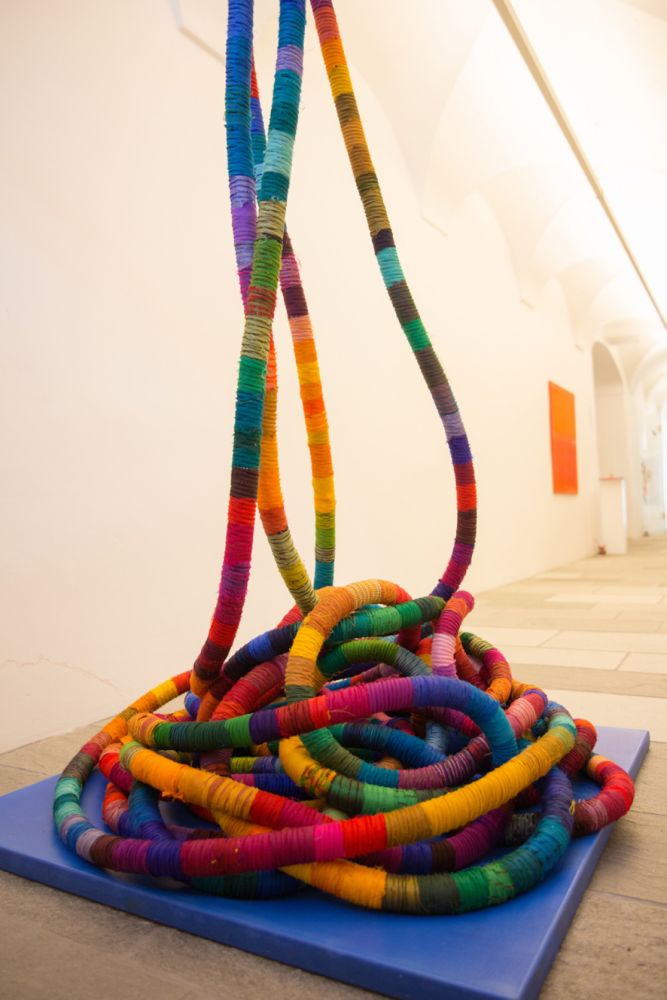
Brainware, Mascha Mioni, 2015
Oil and pigment on canvas, 36 m vacuum cleaner tube, wrapped with 600 m of used sari-silk
When Verena in red
lost
her wits
And the Hindu-women
cut their saris
to stripesThe dust did not
anymore
fly through the pipe
Then
the blue of the sky
lay on the floor
And hell
came over us.
-
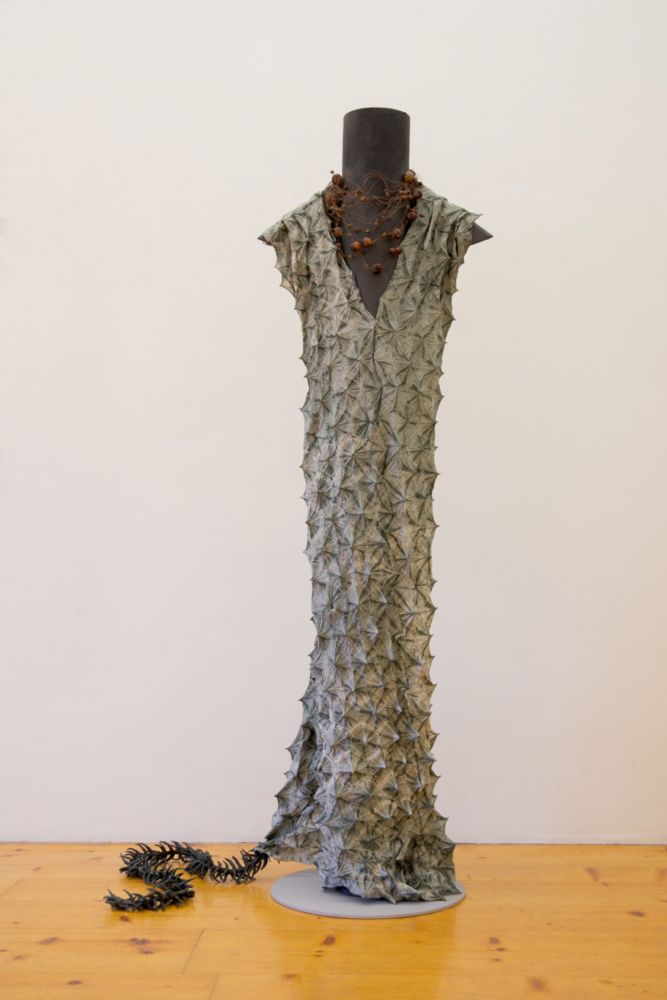
Remember Arimatsu, Mascha Mioni, 2008
Cotton, dyed, Kumo Shibori
-
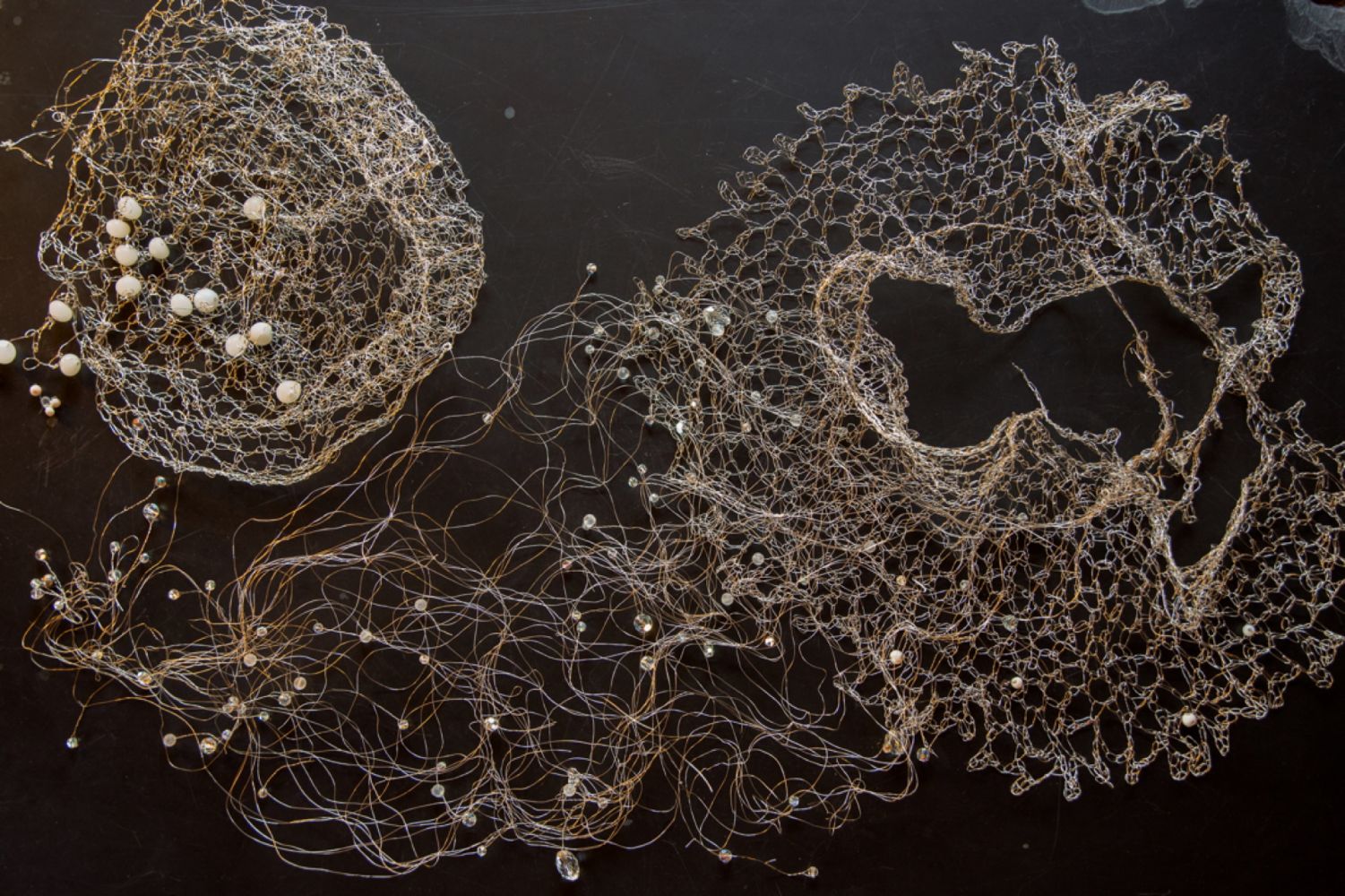
Trinkets to Insieme, Mascha Mioni, 2015
Silver wire, crochetted, beads
-
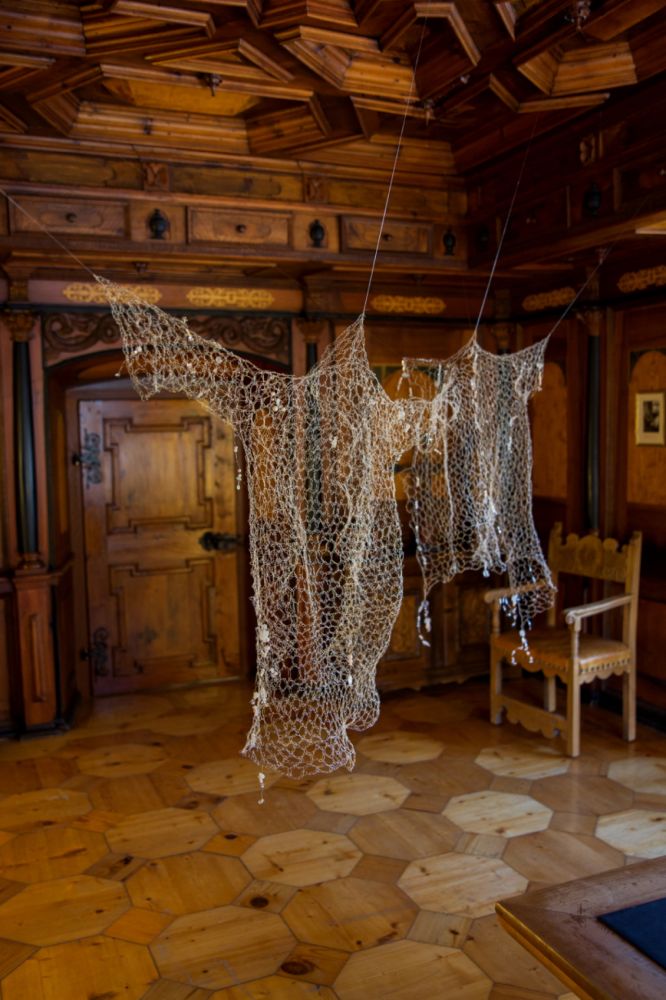
2018 Exhibition Museum Sursilvan Trun
From July 28 to Sept. 8, 2018 Mascha Mioni and Heiner Graafhuis curated the textile art exhibition "Shades of Memory" at the venerable old Museum Sursilvan in Trun/Grisons.
The five world-reknown artists:
Yoshiko Iwamoto Wada, Berkeley/USA
Ana Lisa Hedstrom, San Francisco/USA
Jorie Johnson, Tokyo/Japan
Mary Jaeger, New York/USA
Mascha Mioni, Disla & Meggen/Switzerland
show their fine textile creations.
The Trunser photographer Alexandra Coray-Guldimann has documented the exhibition.